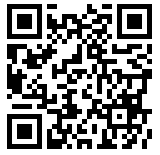Welcome to the Physics Museum
The museum houses a collection of instruments, books and memorabilia dating back to the very beginning of The University of Queensland. Among other things, it offers visitors an insight into how things used to be done, and to see how to use a slide rule, computer punch cards, computer magnetic memory, a 1 meter searchlight mirror, and shake hands with their own image.
Check out the museum catalog.
You are welcome to visit 9-5 weekdays. Although not all items are labelled, most are, and have links to more information on our website. We have a smartphone audio guide system.
AUDIO TOURS ( for SMART PHONE or ONLINE)
MICROSCOPES (downstairs)
BEFORE PHOTONICS (downstairs)
CRO - QUEEN OF INSTRUMENTS (upstairs)
PROUDLY MADE IN AUSTRALIA (coming soon)
GOOD OLD DAYS OF CALCULATION (upstairs)
H.W. Cox Ltd/London Patent No. /16926 61*33*33 Consists of two concentric coils of wire wound on a cylindrical core of soft iron wires impregnated with paraffin wax, all mounted on a hollow base containing a capacitor (which is constructed from sheets of tin foil separated by paraffin paper). Contains a flat spring contact breaker but also has terminals to which a mercury break may be connected. A polarity change switch is missing. The primary (inner) coil consists of two or more layers of thick silk covered copper wire impregnated with paraffin wax placed in an ebonite tube. The secondary coil is divided into sections separated by ebonite disks (to prevent discharge within the coil), each containing many turns of very thin, fine silk covered copper wire impregnated with paraffin wax also encased in ebonite. This is terminated in two discharging rods. When a small voltage (12 volts, say) is placed across the primary coil, a large one is induced across the secondary coil (105 volts). It is possible because of the large number of turns in the secondary coil, the concentrated magnetic field (due to the iron core and the close of the coils), and the abrupt and rapid interruptions (due to the contact breaker). The coil was invented in 1851 by Heinrich Daniel Ruhmkorff (1803-1877), who was a German instrument maker in Paris. It was popular for energizing discharge tubes and in particular for generating x-rays (which were discovered in 1895 by Roentgen). Harry Cox died of x-ray induced cancer.
This is the summary that will appear on the front page
Opening hours
 The Physics Museum is on Level 2 in the Parnell Building (7) and is open from 9am–5pm, Mondays to Fridays.
The Physics Museum is on Level 2 in the Parnell Building (7) and is open from 9am–5pm, Mondays to Fridays.
If you have a smart phone you can choose a tour from the menu at the left or just browse. To help you find the objects in the tour, each display case is coded, eg N25, near its lock, and the location is given in the description.
If you would prefer to browse the display, but want more information than is shown on the labels, you can often use your smart phone to call up more. Just go to 'search catalogue' at the top of this page and key in the ID number printed at the bottom right of the object label.
What's this?

The Physics Museum is QR Code enabled! This means you can scan the Quick Response tags you'll find around the museum on your smart phone or tablet to get more information.
More details on getting started can be found here.



